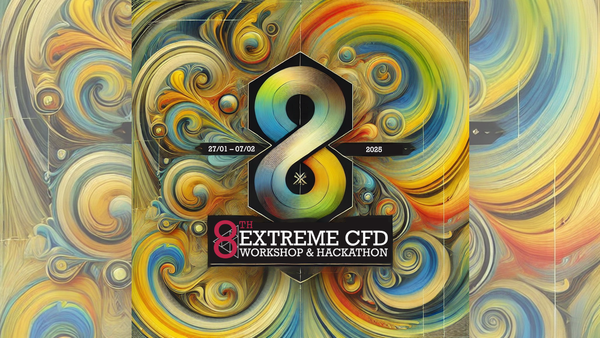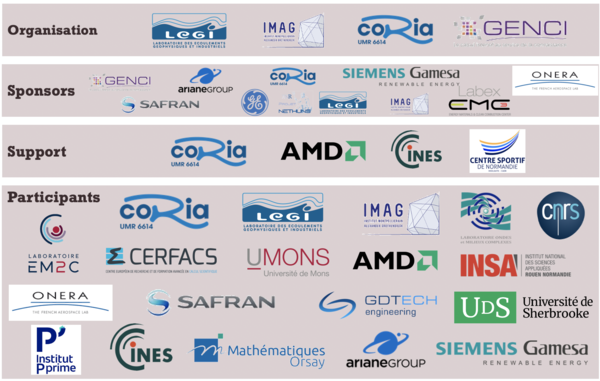ECFD workshop, 8th edition, 2025
Contents
- 1 Description
- 2 News
- 3 Thematics / Mini-workshops
- 4 Projects
- 4.1 Hackathon GENCI - P. Begou, LEGI
- 4.2 Mesh adaptation - A. Grenouilloux, ONERA & G. Balarac, LEGI
- 4.3 Numerics - M. Bernard, LEGI & G. Lartigue, CORIA
- 4.4 Turbulence - L. Voivenel, CORIA & P. Bénard, CORIA
- 4.5 Two Phase Flow - J. Leparoux, SAFRAN & J. Carmona, CORIA
- 4.6 Combustion - Y. Bechane, CORIA & S. Dillon, SAFRAN & K. Bioche, CORIA
- 4.7 User Experience & Data - L. Korzeczek, GDTECH
Description
- Event from 27th of January to 7th of February 2025
- Location: Centre Sportif de Normandie, Houlgate, near Caen (14)
- Two types of sessions:
- common technical presentations: roadmaps, specific points
- mini-workshops. Potential workshops are listed below
- Free of charge
- Participants from academics, HPC center/experts and industry are welcome
- The number of participants is limited to 68.
- Objectives
- Bring together experts in high-performance computing, applied mathematics and multi-physics CFDs
- Identify the technological barriers of exaflopic CFD via numerical experiments
- Identify industrial needs and challenges in high-performance computing
- Propose action plans to add to the development roadmaps of the CFD codes
- Organizers
- Guillaume Balarac (LEGI), Simon Mendez (IMAG), Pierre Bénard, Vincent Moureau, Léa Voivenel (CORIA).
News
- 23/10/2024: First announcement of the 8th Extreme CFD Workshop & Hackathon !
- 22/11/2024: Deadline to submit your project
Thematics / Mini-workshops
These mini-workshops may change and cover more or less topics. This page will be adapted according to your feedback.
To come...
Projects
Hackathon GENCI - P. Begou, LEGI
Mesh adaptation - A. Grenouilloux, ONERA & G. Balarac, LEGI
Numerics - M. Bernard, LEGI & G. Lartigue, CORIA
N7 -Implicit time advancement for low-Reynolds number flows with particles. S. Mendez, C. Raveleau (IMAG), M. El Moatamid, V. Moureau (CORIA)
IMAG runs numerous simulations of red blood cells under flow. Those simulations are at low Reynolds number (0.001 to 1.0, typically). Splitting of the time advancement is used to treat the diffusion terms implicitly, albeit with an important numerical cost: implicit diffusion is 50 to 60% of the computational cost. Recently, M. El Moatamid implemented a genral framework to deal with implicit time advancement for scalars. In this project, the general method has been transposed to the advancement of the velocity field in the ICS and RBC solvers of YALES2/YALES2BIO. This enables testing various linear solvers (GMRES based). However, such solvers do not decrease the CPU time compared to the existing implementation. However, while working on this, it was identified that residual recycling was not activated in the current implementation of the implicit diffusion. This sped up the implicit diffusion cost by 35%, for a total gain of 20% for the computation. In addition to this achievement, moving to the framework coded by Moncef will have other beneficial side effects: we anticipate simplifying the implementation, with an easier merging between YALES2BIO and YALES2. The method will also be implemented in the electrosatic solver, for which the Poisson problem should benefit from the new GMRES-based solvers. In addition, this project highlights the importance of improving the treatment of stiff source terms in the red blood cells simulations, to be able to overcome the current limitation in time step due to those term and have a chance to benefit from higher-order time schemes, efficient at high Fourier numbers.

